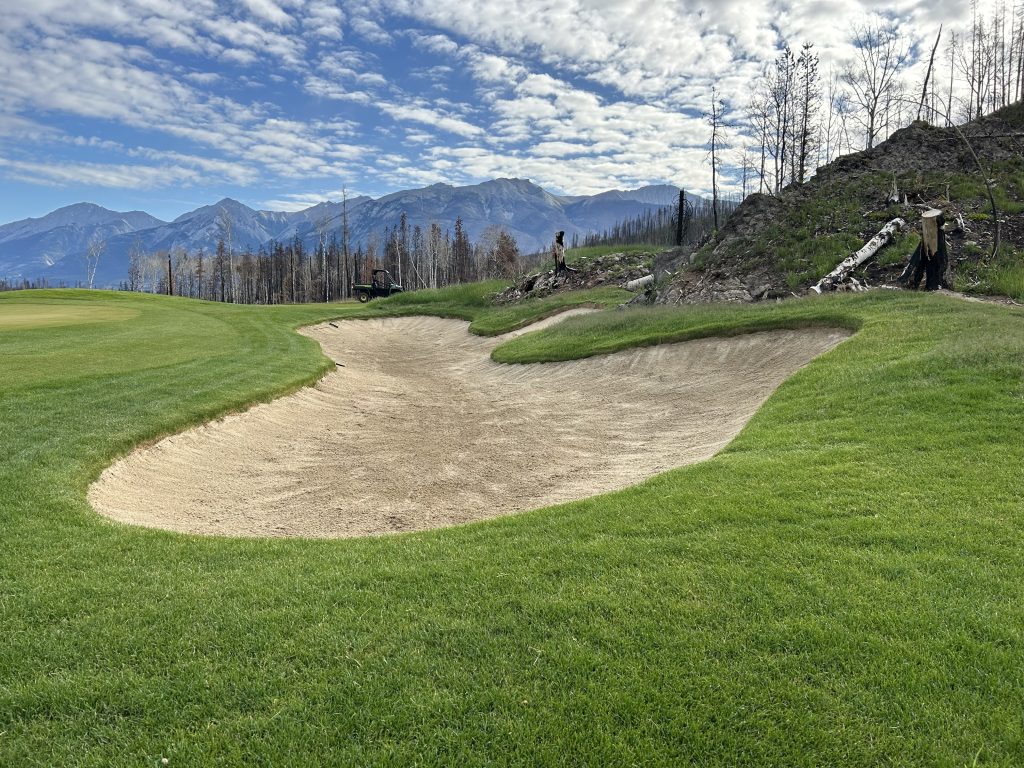Introduction
When Glenn Griffis, superintendent of Fairmont Jasper Park Lodge Golf Club, first stepped back on the course seven weeks after the 2024 wildfires, it was far from the course he’d worked on for 30 years. The club lost its maintenance facility, equipment and irrigation mainline and the turfgrass and bunkers took a heavy hit.
“It was a real eye opener walking the course for the first time,” he said. “I wouldn’t have guessed when we evacuated that I would come back to no grass in some areas and 8 inches in others.”
The wildfires, though they caused devastating loss to the world-renowned course, set in motion restoration efforts both planned and unplanned. Griffis was on a mission to reaffirm the course’s position as one of Stanley Thompson’s best designs and one of Canada’s greatest courses.
Restoring a course with such a rich history is no small task, especially with its 100th anniversary approaching, but if anyone has the experience and passion to do it, it’s Griffis. When Griffis first started at the course, his first project was a restoration project for one of its most recognizable features — its iconic bunkers. Now, they’re back in focus as a priority in his recovery plans.
“It was near and dear to me just to see how much things have improved in the bunker building world,” he said.
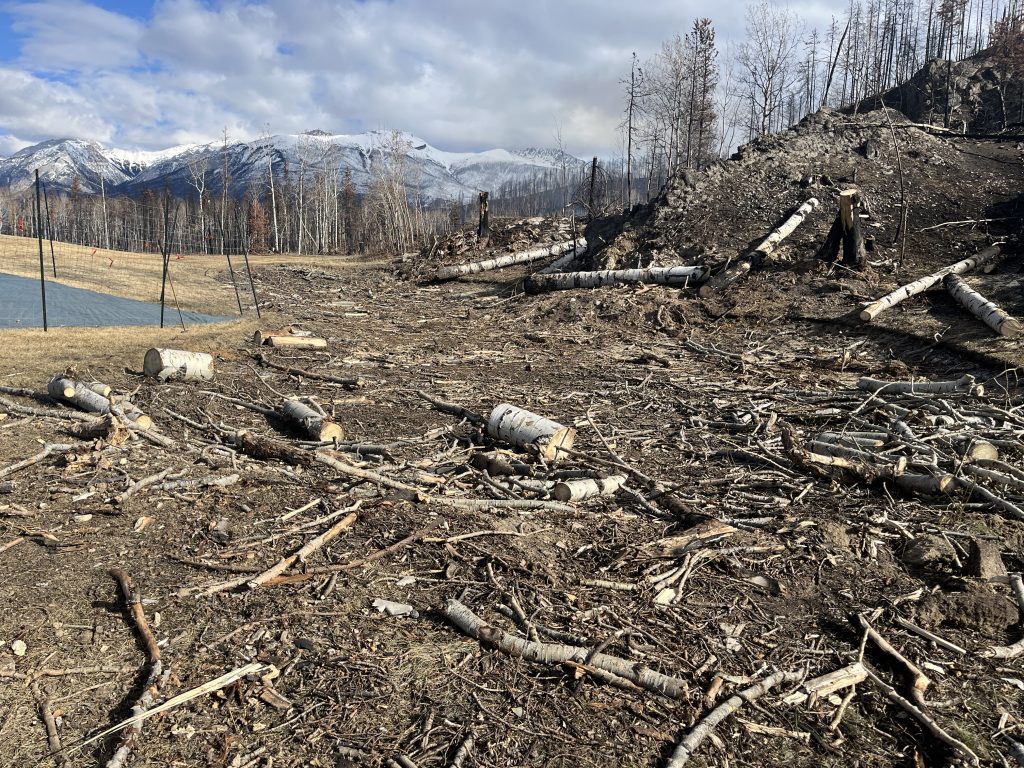
Legacy and Loss
In July 2024, a wildfire started near the townsite of Jasper. Intensified by strong winds and merging multiple other fires, it quickly spread over 32,000 hectares and lasted over seven weeks. It significantly impacted the golf club, burning over 90% of the iconic course.
Damage to the bunkers was extensive: extreme winds had uprooted trees and thrown them at the bunkers’ edges; ash and debris had contaminated the sand and subsoil; the wildlife fence had burned down, making way for wildlife to trample the bunkers while feeding on the grass; and 3,000-ton machinery had driven through them to remove fallen trees and debris.
Despite the devastation, Griffis remained hopeful. “You quickly took the positives out of it,” he said, “We [now] have mountain views from every spot on the golf course.”
On a Stanley Thompson course, especially the one at Jasper, bunkers aren’t merely a hazard—they’re integral to the very identity of the course. Fairmont Jasper Park Lodge Golf Club is perhaps the best example of Thompson’s unique bunkering, where their dramatic slopes with fingers and capes mirror the stunning mountaintop views where the course nestles itself. They draw the eye, make you choose your shots strategically and with over 80 on the property, you can’t help but be captured by their beauty.
Every restoration decision was made with the full weight of that history in mind, with designer and historian Ian Andrews (Ian Andrews Golf Design) guiding the process. Faced with challenging installation conditions and tight timelines, Griffis opted to use a technology he’d never used before: Flexxcape™ bunker liners.
Installation and Restoration
“It was my first choice,” Griffis said when asked about the thought process behind choosing Flexxcape™. Griffis had seen bunker liners at trade shows before, but it was Bryan Ohnysty (Partner of Ohnysty Crough Golf Design) and Trevor Gibson (BrettYoung) who finally sold him on the benefits.
Made of a synthetic, non-degradable PVC material, Flexxcape bunker protection system is designed to outperform hardscapes. It’s equipped with an undulating, irregular loop pattern to increase cohesion with sand particles for high infiltration rates and unrivalled protection. The proprietary Flexxcape bonding agent melts the PVC and reorients its chemical bonds, allowing for quick installation in all weather conditions.
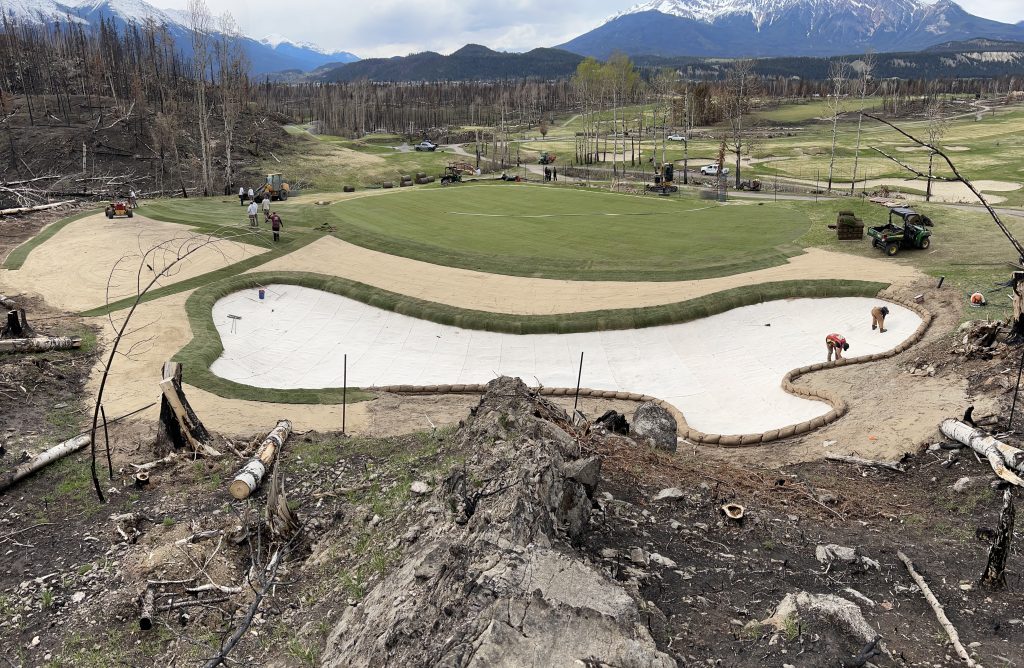
What attracted Griffis to Flexxcape was the ease of installation. Ohnysty could use Griffis’ existing golf course staff for the installation, as opposed to hiring contractors. Ohnysty and Griffis started by restoring two bunkers on hole seven, working a meter outside the original bunker edge to strip the grass and the edges, reshape the bottom and redo the drainage before installing Flexxcape.
Griffis was impressed by the ease of installation: “[Ohnysty] showed a couple of my staff, and in five minutes had [them] installing bunker liner themselves.”
Ease of installation wasn’t the only feature that made Flexxcape right for the job: it was ideal for the mountainous landscape, conforming to the bunker base regardless of bedrock or irregularities on the subsurface; it allowed Griffis and Ohynysty to get back to work immediately after a snowstorm with zero drying time required; and they’re optimistic that Flexxcape will be able to stand up to elk traffic while they restore the wildlife fence.
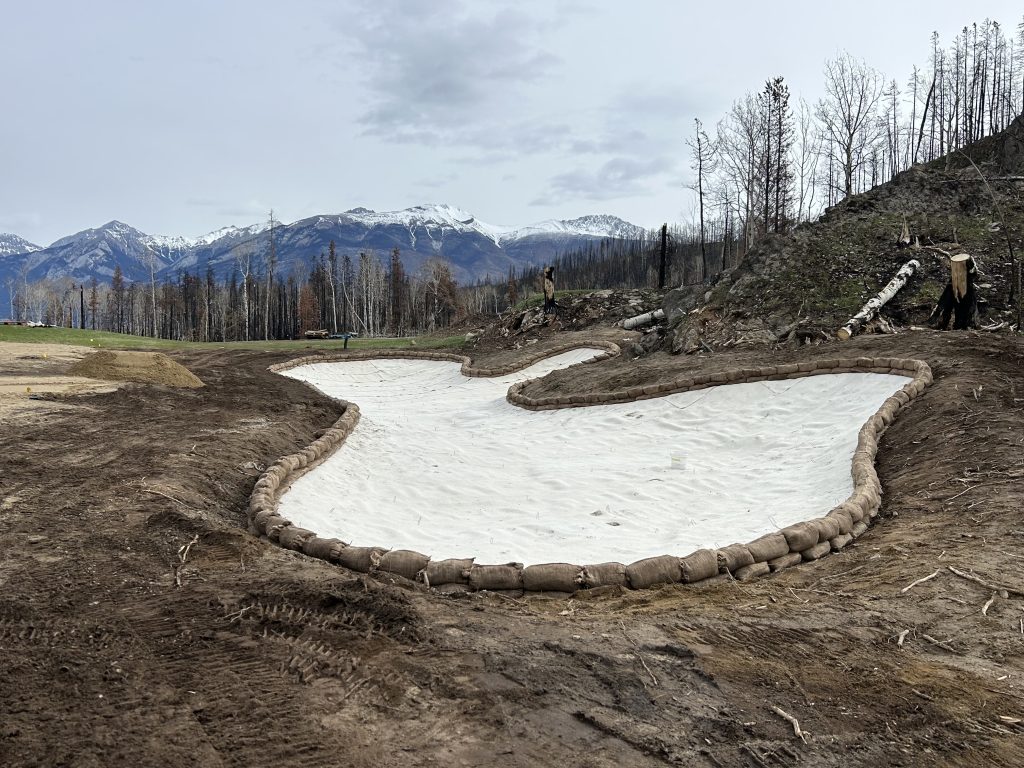
Aside from the new issues caused by the wildfire, the course had previously faced common bunker maintenance issues, such as contamination and washouts, both of which Griffis could prevent by using Flexxcape. Griffis is already seeing success with holding capability: “It’s holding the sand on the banks so well, so that’s a huge benefit.”
Over time, the bunkers on the course shifted with evolving maintenance practices, losing some of their original shape. Even though wildfire restoration was the focus of the renovations, the holding capacity and washout prevention Flexxcape provides is allowing Griffis and his team to recreate what was there 100 years ago. Griffis and Andrew are working from aerial photos of the course to bring back some of Thompson’s dramatic flair.
Thompson believed that bunkers should be intentional: with faces and contours that mirror the natural surroundings, curving capes of grass and dramatic slopes of sand that draw the eye, and consistent placement greenside and at doglegs. All of these features (implemented as a part of a revamp to the course in the late 1920s) are difficult to maintain, but will be possible with Flexxcape.
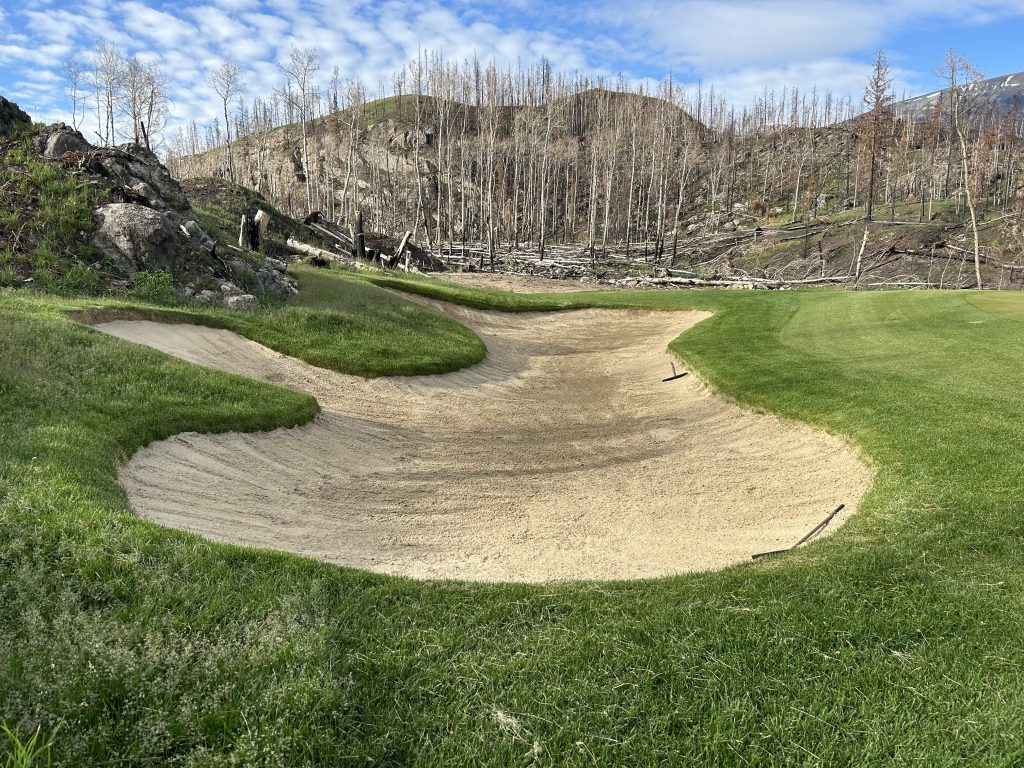
A Centennial Celebration
Reopening in time for the club’s 100th anniversary, was a “rallying moment” for Griffis’ team. Even though restoration efforts are far from finished, the course reopened on July 1st and is hosting special centennial celebrations throughout the summer. Some members of the golf club have already been on tours of the course, and Griffis is pleased that they’ve been “blown away by the two bunkers.”
Ohnysty says that something unique he noticed while working on this project was the heart and passion among Griffis’ staff. “They built a culture there after the fire” he said, “the people that stayed on the project are really committed to the golf course and are passionate about it—and I don’t get that at a lot of other places.”
Despite some staff (including Griffis himself) losing their homes and the community they loved, they remained steadfast in their commitment to rebuilding the course to its former legacy and every single staff member who was there in the aftermath of the fire has returned this year to see the project through.
Using Flexxcape™ bunker liners, Griffis was able to fix not only the immediate damage caused by the wildfire but also underlying issues of contamination and washout that had been reoccurring for 30 years, bringing them closer to their original design in the process.
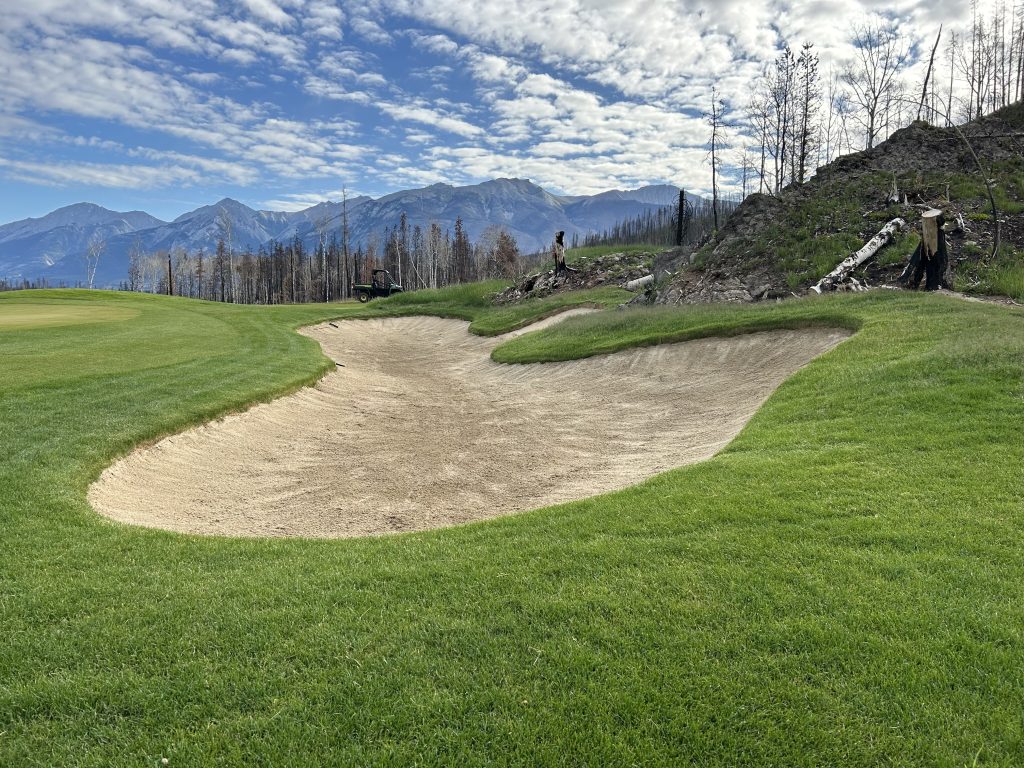
Griffis has future restoration plans that include adding tee decks, completing irrigation repairs and rebuilding the wildlife fence. He mentioned that the most exciting one is restoring and renovating the other 86 bunkers.
“Flexxcape is definitely in our plans,” he said.
Whether responding to a crisis or planning a long-awaited upgrade of your bunkers, talk to your BrettYoung Representative today to learn more about Flexxcape and installation for your course.

